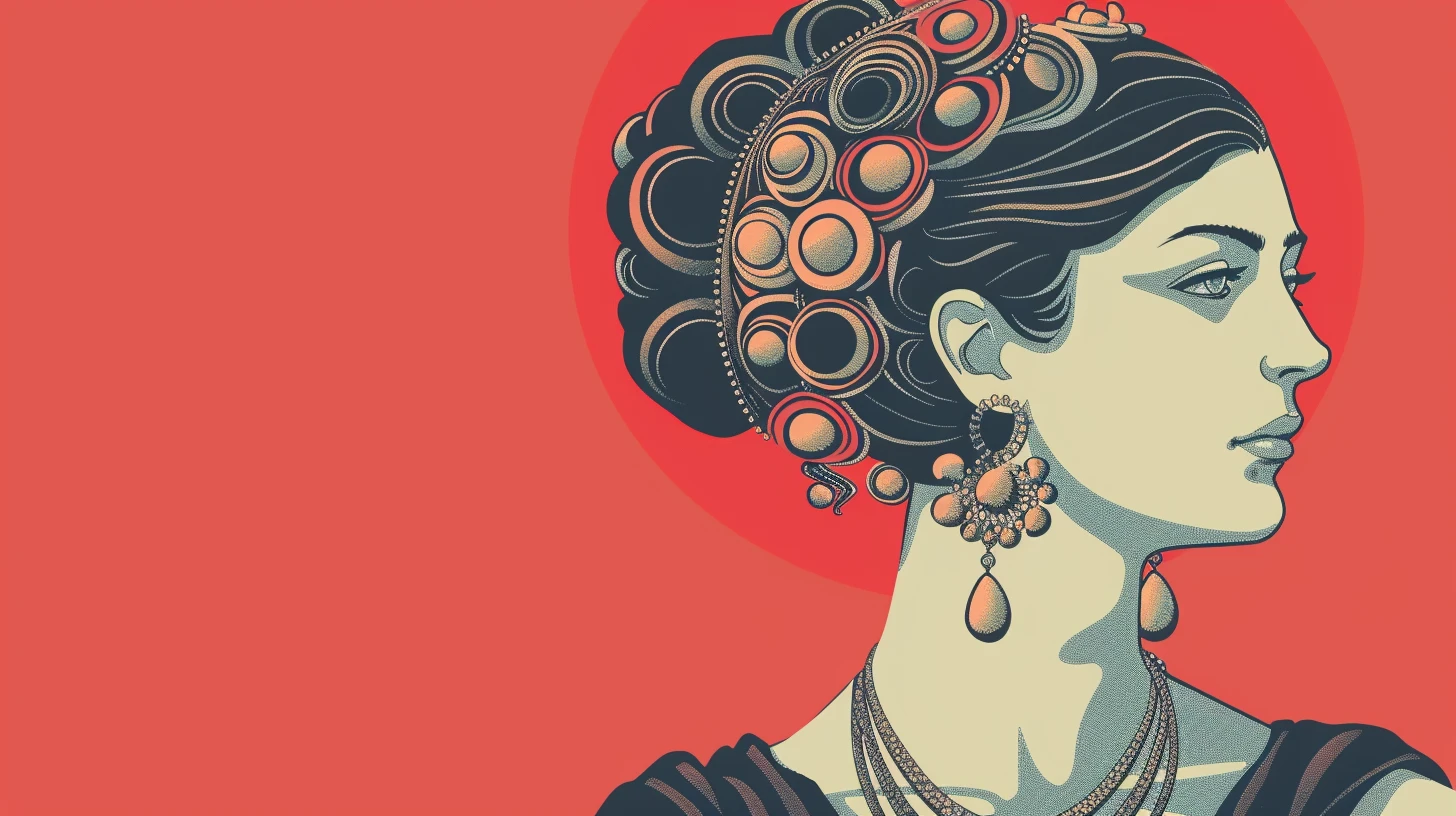
© History Oasis
The sartorial legacy of ancient Greece stands as a resplendent tapestry woven with threads of functionality, artistry, and deep cultural symbolism.
From the humble folds of the chiton to the lavishly adorned kalasiris, ancient Greek fashion transcended mere aesthetic pursuits, emerging as a rich symbolic language that narrated societal stratifications, mythological reverence, and the eternal quest for harmonic expression.

The chiton represented the quintessential garment of ancient Greek dress, its simplicity and versatility reflecting the Greek ideals of natural grace and harmony.
Both sexes donned this rectangular linen cloth, deftly arranging the folds and securing it upon the shoulders with ornate pins or brooches, allowing for subtle variations of style and self-expression.
As a foundational element of Hellenic apparel, the ubiquitous presence of the chiton across all social strata cemented its status as an enduring sartorial hallmark of classical Greek civilization.

Distinct from the understated elegance of the chiton, the flowing peplos represented a quintessentially feminine aesthetic in ancient Greek fashion.
Expertly draped over the feminine form, the heavy woolen folds were artfully arranged and secured upon the shoulder, accentuating the wearer's grace while preserving an air of modest decorum.
As an iconic garment particularly favored among the patrician classes, the peplos emerged as a hallmark of cultured nobility and refinement within the sartorial tapestry of classical Greece.

The himation served as the defining outer garment for men in ancient Greek society, its ample woolen proportions both utilitarian and emblematic of masculine nobility.
Elegantly draped over the foundational chiton, the versatile himation could be fashioned in myriad styles, affording the wearer a canvas upon which to express individual taste and social standing.
As an enduring cultural signature, the ubiquity of the himation represented a core tenet of the classical Greek masculine identity, bridging the realms of adornment and philosophic comportment.

Emblematic of the austere Spartan aesthetic, the Doric chiton stood in stark contrast to the ornate fashions favored in Athens and beyond.
With its sleeveless, woolen construction secured minimally at the shoulders, the garment boldly exposed the female form, epitomizing the militaristic Spartan ideology that valued physicality and functionality above ostentatious embellishment.
This unadorned glimpse of the body challenged prevailing Hellenic modesty while projecting an image of fortitude befitting the fabled Spartan warrior culture.

Originating in the Ionic regions, the kalasiris represented a departure from the typical peplos silhouette favored throughout Greece, its flowing lines and lavish embellishments reflecting the opulent aesthetics of the East.
As an imported garment, the kalasiris' richly embroidered textiles and vibrant hues spoke to the wealth and cosmopolitan influences of the mercantile class, who enthusiastically embraced this daring sartorial statement.
The kalasiris' symbolic embodiment of cross-cultural exchange highlights the pivotal role fashion played in communicating the complex socio-economic stratifications of the Hellenic world.

Vibrancy and rich chromatic expression defined the ancient Greek approach to color, with clothing serving as a vivid canvas upon which to showcase the sublime hues rendered from nature's botanical bounty.
Transcending mere aesthetic indulgence, the meticulously extracted pigments from flora, insects, and mineral sources emerged as a symbolic language, with each vivid shade of red, yellow, green, and blue encoding deeper meanings tied to mythology, status, and ceremony.
This reverence for color's transformative properties elevated the act of dyeing cloth to a venerable artisanal pursuit, inextricably intertwined with the cultural, spiritual, and creative lifeblood of ancient Hellenic civilization.

Beyond the rich dyes that brought vibrancy to Greek garments, meticulous decoration through intricate embroidery, appliqués, and woven patterns further elevated dress into an artistic medium.
Such ornate embellishments transcended mere adornment, serving as a canvas upon which wearers could narrate symbolic vignettes from myth, showcase allegiance to deities through sacred motifs, or broadcast their status and prosperity.
Whether reserved for ceremonial rites or worn by the elite classes, these painstakingly rendered decorative elements represented a seamless confluence of aesthetics and spirituality that was deeply woven into the cultural fabric of ancient Greece.

Understated yet distinctive, the footwear of ancient Greece exemplified the balance between functional simplicity and subtle indications of regionality and social stratification.
From the humble leather sandals favored by the working classes to the refined boots adorned with decorative elements showcasing one's status and origin, the styles were as varied as the city-states themselves.
What may have appeared mere pragmatic coverings for the feet in fact disclosed nuanced insights into the complex cultural tapestry of the Hellenic world through this oft-overlooked sartorial element.

Glittering adornments crafted from precious metals and radiant gemstones served as resplendent emblems of status and artistry for Greek women of the patrician classes.
Beyond their materialistic value, these finely wrought earrings, necklaces, bracelets, and ornate hair accessories encoded deeper symbolic significance, conveying the wearer's elevated rank while paying reverence to the divine through iconographic motifs.
Simultaneously projecting an aura of worldly sophistication and spiritual devotion, the resplendent jewelry of ancient Greece represented a scintillating confluence of the material and mythological realms.